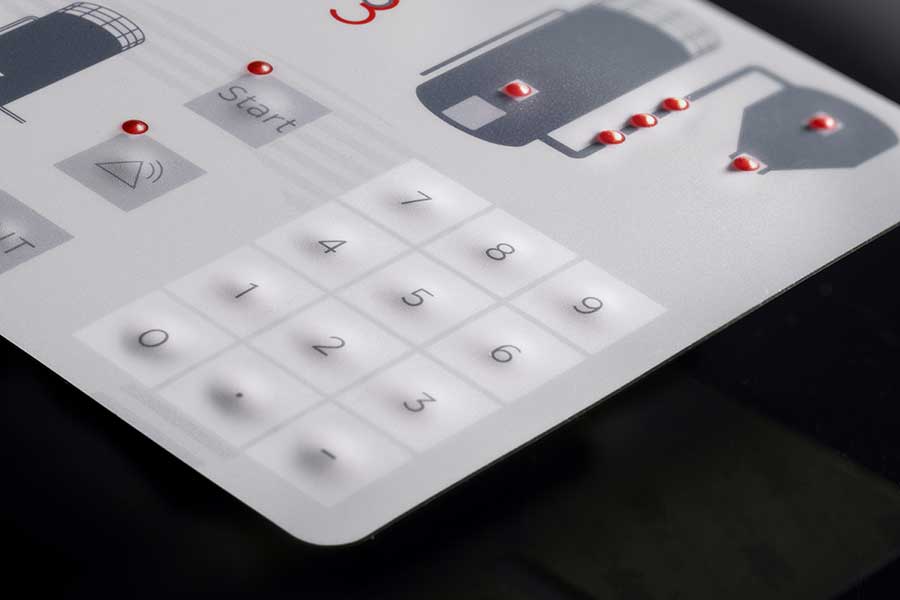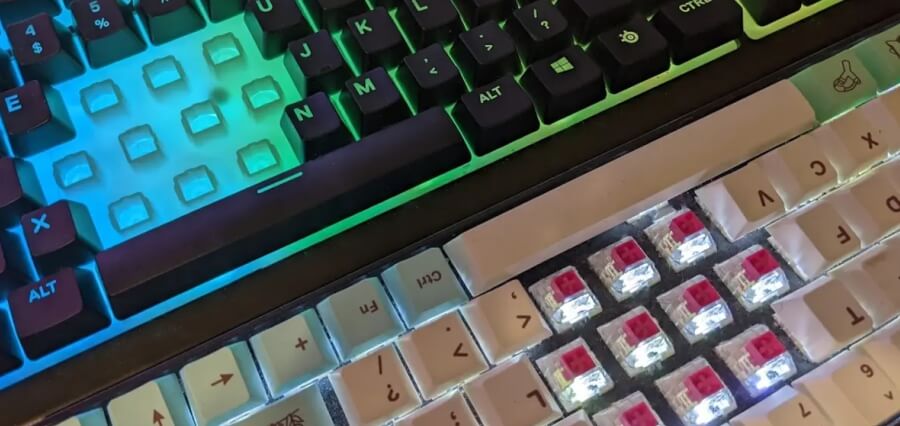Explore Various Sorts Of Membrane Switch Technologies for Your Requirements
Explore Various Sorts Of Membrane Switch Technologies for Your Requirements
Blog Article
Recognizing the Performance of Membrane Changes for User User Interface Tools
The performance of membrane layer switches stands for a considerable advancement in user interface style, incorporating performance with aesthetic flexibility. These buttons run through a multi-layered structure that equates individual interactions into electric signals, enabling both portable layouts and strength against ecological variables. As markets increasingly focus on user experience, comprehending the subtleties of membrane switch modern technology ends up being important. What ramifications do these improvements hold for future applications, and how might they redefine user communications across various gadgets?
What Are Membrane Switches?
Membrane layer switches are innovative interface gadgets that assist in customer communication with digital tools. These functional parts include several layers, including a graphic overlay, spacer, and a printed circuit layer. The style enables a seamless integration into different digital tools, improving both the visual and useful aspects of customer interfaces.
Membrane layer switches are typically utilized in a wide variety of applications, from home home appliances to industrial machinery and clinical devices. Their construction typically features a slim profile, making them a perfect choice for compact layouts. The responsive feedback provided by these switches can be crafted to satisfy specific customer preferences, ensuring efficient interaction between the individual and the device.
Durability is an additional considerable advantage of membrane switches, as they are immune to dust, wetness, and chemicals, which boosts their life-span popular atmospheres. Additionally, these buttons can be personalized in regards to form, size, and visuals layout, allowing for branding and user-specific functions. Overall, membrane layer switches stand for a practical remedy for boosting individual experience in digital gadgets, incorporating functionality with aesthetic charm in an effective fashion.
Just How Membrane Layer Switches Work
Operating on an uncomplicated principle, membrane switches over use a split building to sign up customer input properly. Each switch contains several layers, including a published circuit layer, a spacer layer, and a leading visuals layer, which are designed to work together flawlessly. When a user presses the leading layer, it presses the spacer layer, bringing the conductive aspects of the circuit layer right into call with each various other.
This contact produces a shut circuit, signaling the gadget to implement a specific feature. The design allows for various arrangements, consisting of responsive responses, which can boost the customer experience by supplying a physical feeling upon activation. The products made use of in membrane layer buttons frequently consist of adaptable substrates, such as polyester or polycarbonate, which ensure durability and resilience against deterioration.

Key Advantages of Membrane Layer Buttons

Another significant benefit is their density. Membrane layer switches are thin and light-weight, which makes it possible for manufacturers to conserve area in their tools without sacrificing capability. This function is particularly advantageous in applications where weight and quantity are vital considerations.
In addition, membrane layer buttons are immune to dirt, dampness, and chemicals, boosting their resilience. This strength expands their life-span and minimizes the need for constant replacements, resulting in cost savings with time.
Moreover, the tactile click site feedback supplied by membrane switches can be optimized to improve customer communication. They can include functions such as elevated switches or distinct clicks, improving use and customer experience.
Applications Throughout Industries
User interface tools utilizing membrane layer switches prevail in a vast variety of markets, showcasing their flexibility and performance. Membrane Switch. In the medical field, membrane buttons are essential to tools such as analysis equipment and individual monitoring systems, where their longevity and convenience of cleaning are critical for preserving health standards. In the automobile market, these buttons are employed in dashboard controls and infotainment systems, supplying a streamlined and modern-day interface for individuals.
Furthermore, the consumer electronics industry take advantage of membrane layer buttons in appliances and portable gadgets, where portable style and easy to use interfaces enhance individual experience. Industrial applications likewise take advantage of membrane layer switches over for control panels in machinery and automation systems, stressing their effectiveness and resistance to rough atmospheres.
In the aerospace and protection sectors, membrane layer switches are utilized in cockpit controls and devices, where reliability and efficiency under severe conditions are extremely important. In addition, the video gaming sector progressively incorporates membrane switches in controllers and game devices, contributing to an engaging individual experience. Overall, the flexibility of membrane switches allows their prevalent use throughout various sectors, highlighting their value in modern-day interface layout.
Future Patterns in Membrane Change Technology

Additionally, making use of innovative products, such as polycarbonate and polyester films, is expected to increase, providing improved sturdiness and resistance to ecological stressors. These materials contribute to the overall durability of membrane switches, making them ideal for harsher commercial applications.
Moreover, the unification of wise technology, including IoT connectivity, will certainly allow membrane layer buttons to connect with other devices and systems, assisting in a more interactive user experience. This trend straightens with the growing demand for smart tools throughout different industries, from health care to customer electronic devices.
Finally, personalization choices are expected to broaden, enabling makers to produce bespoke options tailored to particular user demands and preferences. These advancements will place membrane layer buttons as vital elements in the development of individual interface technology.
Final Thought
To conclude, membrane layer switches over represent a critical development in interface modern technology, using a trusted and functional service for varied electronic applications. Their split building and construction promotes portable style, while features such as responsive comments enhance customer communication. The sturdiness versus environmental variables additionally solidifies their energy across numerous markets. As advancements in product scientific research and touch noticing technologies proceed, the functionality and applicability of membrane buttons are expected to increase, strengthening their importance in modern-day electronic tools.
Report this page